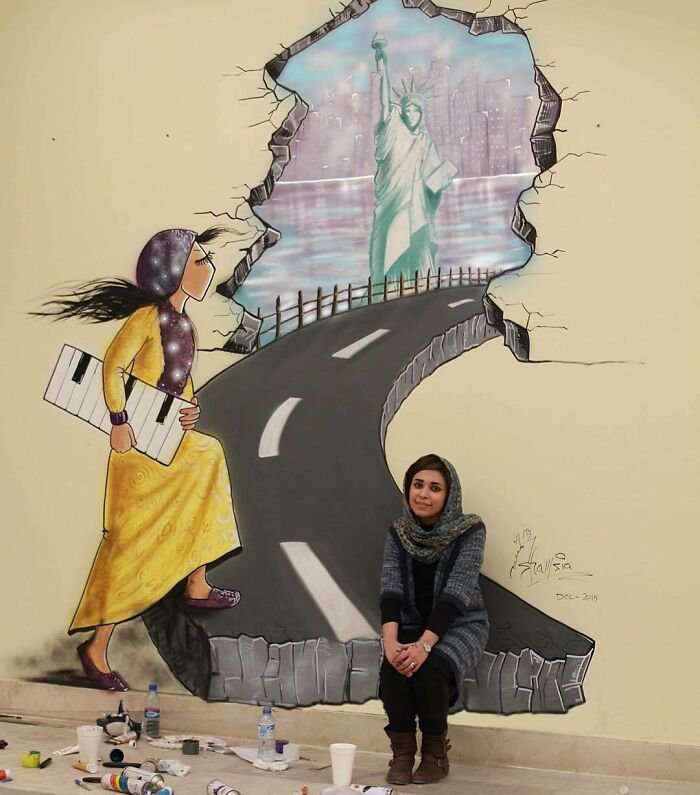Taliban’s takeover of Afghanistan has posed a question on the lives and safety of many Afghanis.
But being outsiders, how much can we make sense of it to truly put ourselves in their shoes? So we have to turn to someone who can comprehend things to us
Meet Shamsia Hassani, a painter who has taught at Kabul University, is the first female street artist of Afghanistan.
She began in 2010 after attending a graffiti workshop conducted by CHU, a British artist.
Hassani has now created her own style and has painted her signature character, a woman with closed eyes and no mouth, all throughout the nation.
Shamsia Hassani was born in Iran in 1988 to Afghan parents. She has had to face adversity since the beginning of her life. In an interview, she said,
Since Iran has no law through which you can be an Iranian national, I stayed Afghan after birth, I still remember that Afghans were not allowed to work in Iran just because of their nationality. Afghans were told that they don’t have the government’s permission to find a job, so my parents were facing a lot of difficulties. But I was young and didn’t understand.
Shamsia’s life eventually led her back to Afghanistan. In 2010, she attended a graffiti workshop hosted in Kabul by Combat Communications, which guided her down a road she is currently on a decade later.

The other nine artists who attended the class with Shamsia did not continue to work on their graffiti talents or pursue the art form thereafter. She, on the other hand, was hooked.
She believes that graffiti can be used as a means to transform the city’s war-torn walls into vibrant artwork.
She believes that the colours might hide war tales on the city’s walls, allowing people to see new things rather than bullet holes and cracks.
I also believed it could be a way for people to experience my art, people who have never been to an exhibition and have never seen my works. Maybe some would even take pictures in front of it and have a few minutes of entertainment.
However, as Shamsia involved in graffiti, her country grew more unsafe, and she was unable to spray bliss outside. She also had to deal with some other cultural barriers too.
Afghanis were never against the art but against the idea of a ‘woman’ spraying it. Whenever they spotted her doing her art, they’d call her out and address it as haraam.
When I painted in public spaces, I would start feeling unsafe after about 15 minutes, so I would leave the place. If I had the opportunity to stay for about 2-3 hours, my pieces would have been better but in 15 minutes all I could do was either paint something very simple or leave the piece unfinished.
Despite the continuous conflict and many political and social difficulties, Shamsia claims that the situation for women improved when the Taliban collapsed in 2001 – they gradually entered society and were given the chance to learn and flourish.
Unfortunately, things have recently taken a turn for the worst. With the Taliban’s return, many women are fleeing the nation and do not see a bright future ahead of them.
Hassani is safe, but she has been forced to leave her homeland, much to her despair.
A woman with closed eyes and no mouth, sometimes holding a broken musical instrument that gives her the ability to speak and perform. Her closed eyes symbolise the fact that there is nothing good to behold.
In the paintings, the character sometimes takes on different roles, such as a warrior or a hopeless refugee. She looks for peace at times, and she has no identity at other times.
A recurrent figure appears in several of her works. Hers, like that of movie characters, has a certain role to play. Most importantly, the character is a human being, but because women face more restrictions in society, her chosen character was a woman.
As the saying goes, art of any kind never fails to find a way to express itself, in this case, is absolutely true.

















